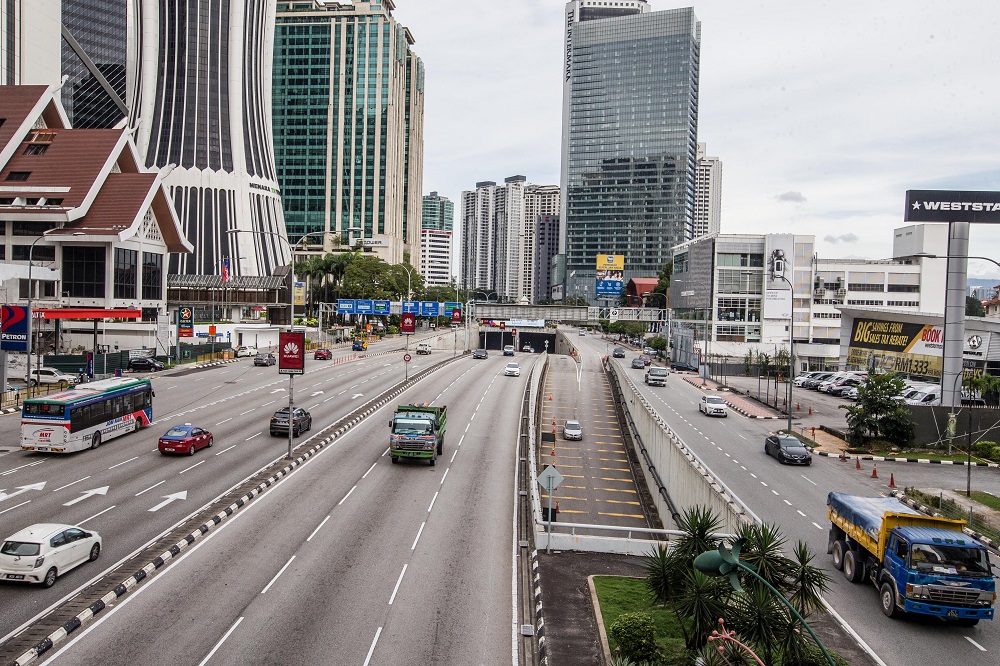MARCH 1 — As we come to the end of the first two months of 2021, many of us in business and management are wondering whether the coming year will be one in which we will sink or swim.
Will we emerge from the Covid-19 pandemic as planned following the vaccine roll-out or will we face further unprecedented challenges in an unstable environment?
It is no embarrassment for managers and business leaders to admit that we had often built strategy based on inaccurate forecasts during 2020.
No amount of insight and analysis could have predicted the unprecedented events we have seen last year and this will likely continue into 2021. It is still uncertain how things will unfold during the coming year.
The challenges in forecasting the business environment meant that many strategies failed and if you are in this situation as a business leader, take heart because you are in good company.
Being unable to make use of clairvoyance, even the most data-minded managers and leaders and the most nimble companies were left with strategies that needed to evolve, pivot, or start over from scratch. Many unfortunately did not survive.
For thousands of others, business strategy was abandoned in the face of the imperative to address operational matters immediately in an ever-changing and chaotic environment.
This often posed a threat to team success and bottom lines because management was focusing only on fixing daily, operational issues.
Many people adopted a wait and see approach, to hunker down and ride the tides of the storm waiting for the waters to settle. In some cases this worked but for others the tides simply overwhelmed them.
Challenges in the supply chain
The events of the last year also posed extreme supply chain challenges and exposed the reality that supply chains lack global resilience and are breaking down in the face of multi-country disruptions.
Talent gaps across the supply chain and operations were also thrown into the spotlight and continue to create high dependency on the workforce and human resource management.
The significant impact of the Covid-19 pandemic and the lockdowns exposed the shortcomings in supply chain management and showed that supply chains and operations are not meeting stakeholders’ expectations for sustainability.
Supply chains are becoming more costly, for example, due to rising global and e-commerce fulfilment costs and can often represent a company’s highest costs-base.
IT systems continue to be expensive to install and run, they are often inflexible and over-reliant on legacy technologies. A lack of IT-driven flexibility inhibits the ability to address customer demands for personalisation and customisation.
Competitors who are more IT-agile enter markets easily and disrupt long-established customer relations.
The new ‘never normal’ supply chain
Against this background, it is useful to review what to expect in the emerging “never normal” supply chain.
First, changing consumer behaviour will affect what, where and how goods and services are delivered amid social distancing and the move to online ordering.
The familiarity and ease of use for online purchasing and delivery will remain attractive and has disrupted many traditional sales processes permanently.
Second, cost structures will move from more fixed to more variable costs, with investments in accelerating digital transformation and investing in areas to build ability.
This will make costs more manageable and more flexible and will give agile businesses an advantage.
Third, to anticipate a new wave of unprecedented events, a more reliable and flexible supply chain will be necessary to shift our responses to changing impacts across the supply ecosystem.
It will be essential to raise visibility and analytics to ensure that companies focus efforts, drive scenario planning and respond rapidly to changing consumer demand.
What you can do now
First, companies must consider accelerating digital transformations and the shift in IT infrastructure. This will also require a new approach to workforce planning and digital up-skilling.
Second, investment of time and resources in scenario planning will be essential to protect growth and profitability. This will involve more frequent financial modelling exercises to improve resilience. New financial and business models to create agility and responsive management and leadership will also be necessary.
Third companies must review digital capabilities to go “asset-light” which is a business model based on fewer physical capital assets. Asset-light models have been popular among start-ups because they offer quicker growth options in many cases due to lower financing requirements in the early stages.
Asset-light companies tend to own only the operational, management and intellectual property of the company, including client-base details. They then use outsourcing for any other assets needed for the business within a business service eco-system.
These types of models are proving to be beneficial as it is letting start-ups to scale-up at a faster pace and expand business rapidly. Ramping-up the digitization of capabilities across the ecosystem, allows cost to be more variable and on-demand.
Finally it will be essential to take the pulse of your customers and other stakeholder groups, thinking through longer-term considerations around shifts in core markets or business models as a result of the pandemic.
Although we have all struggled during the very challenging times of 2020, business managers and leaders need to learn from the experiences of last year and find the options and opportunities when planning for the post-Covid world.
*Professor Premkumar Rajagopal is the President of the Malaysia University of Science and Technology (MUST) and founding President of the International Supply Chain Education Alliance (ISCEA), Malaysia Chapter. Professor Geoffrey Williams is an economist in the Business School at MUST and a member of the ISCEA-Malaysia Advisory Board. Both are based in Kuala Lumpur. The views expressed here are their own.
**This is the personal opinion of the writer or publication and does not necessarily represent the views of Malay Mail.






















